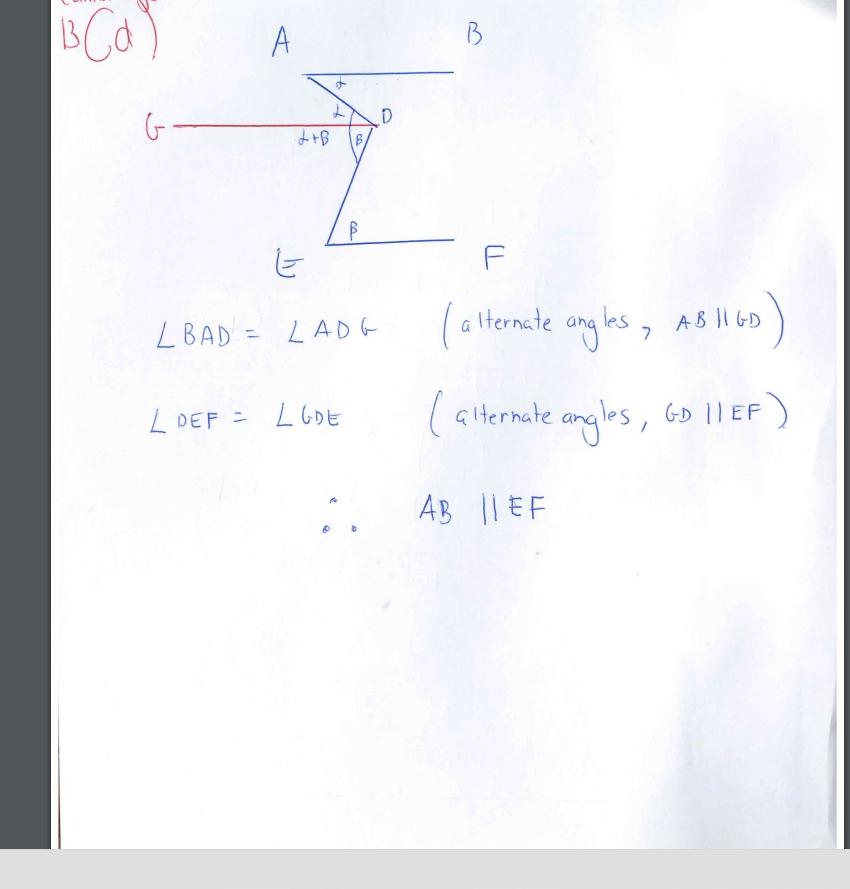appleibeats
Member
- Joined
- Oct 30, 2012
- Messages
- 375
- Gender
- Male
- HSC
- 2016
Students helping students, join us in improving Bored of Studies by donating and supporting future students!
Hint: draw the line through D parallel to AB.View attachment 33302
Unsure how to answer this question without first using the fact that they are parallel lines and so to find angles that then prove they are parallel lines.
That is what I did, but then if you do alternate angles on parallel lines for alpha and beta, doesn't that assume the lines are AB and D extended to C and EF and DC are parallel??

I don't think you can just assume that GD is parallel to both upon a simple construction.
So how would you draw CD?I don't think you can just assume that GD is parallel to both upon a simple construction.
Could I say what you said leehuan?
"Let GD be the line parallel to AB through D"?
The diagram is not wrong. It's what you defined that is wrong. So yes you should say what I said.Somebody gave me a reputation rating for that diagram, so I'm confused as to whether that diagram is right or wrong.
View attachment 33303
Stuck on part d)
Answers say equal alternate angles.
But I don't see how to show that. Probably something to do with the isosceles triangles established earlier.

Yes, it means they're perpendicular. This is because angles AMO and BMO are equal since triangle AMO is congruent to triangle BMO. Since they are adjacent angles on a straight line, each is 90 degrees.View attachment 33304
Dont get how to show part d) AB is perpendicular to OP
I know AM = BM from matching sides in congruent triangles
Answers says just says matching sides and angles , triangle AMO congruent to triangle BMO
But does that mean its perpendicular??
Why did you introduce the letter X into part (d)? I didn't see anywhere where X was mentioned in the questioned. If you did introduce it, where would it be on the diagram?
I think you're thinking of a different question of appleibeats. I was answering this one, which has an X in it:Why did you introduce the letter X into part (d)? I didn't see anywhere where X was mentioned in the questioned. If you did introduce it, where would it be on the diagram?
.View attachment 33303
Stuck on part d)
Answers say equal alternate angles.
But I don't see how to show that. Probably something to do with the isosceles triangles established earlier.

